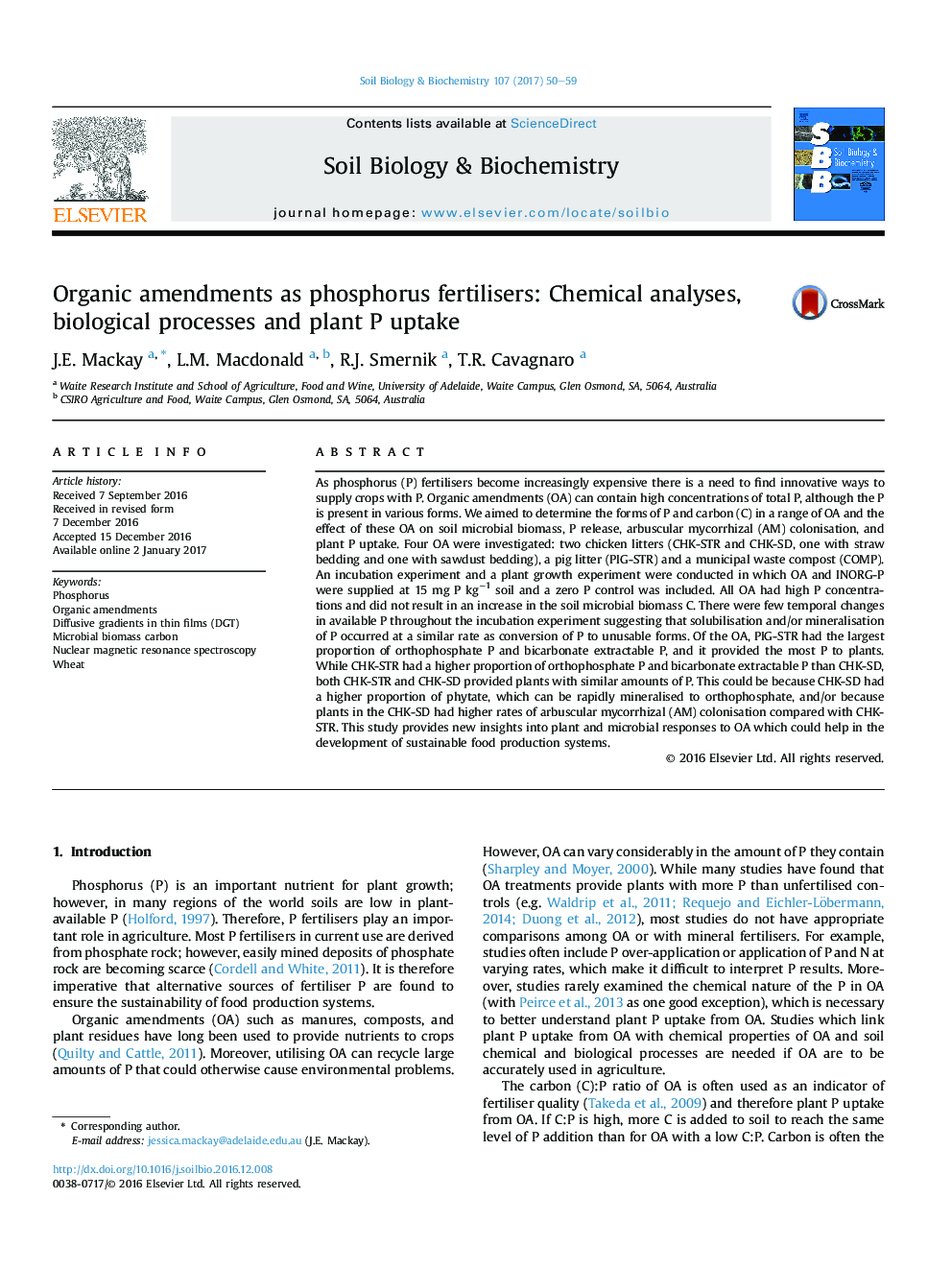| Article ID | Journal | Published Year | Pages | File Type |
|---|---|---|---|---|
| 5516413 | Soil Biology and Biochemistry | 2017 | 10 Pages |
â¢Pig litter supplied more P to plants than chicken litter or compost.â¢The C:P ratio of OA did not affect plant P uptake.â¢Orthophosphate concentrations better explained differences in plant P uptake.â¢Arbuscular mycorrhizal colonisation was influenced by OA.
As phosphorus (P) fertilisers become increasingly expensive there is a need to find innovative ways to supply crops with P. Organic amendments (OA) can contain high concentrations of total P, although the P is present in various forms. We aimed to determine the forms of P and carbon (C) in a range of OA and the effect of these OA on soil microbial biomass, P release, arbuscular mycorrhizal (AM) colonisation, and plant P uptake. Four OA were investigated: two chicken litters (CHK-STR and CHK-SD, one with straw bedding and one with sawdust bedding), a pig litter (PIG-STR) and a municipal waste compost (COMP). An incubation experiment and a plant growth experiment were conducted in which OA and INORG-P were supplied at 15 mg P kgâ1 soil and a zero P control was included. All OA had high P concentrations and did not result in an increase in the soil microbial biomass C. There were few temporal changes in available P throughout the incubation experiment suggesting that solubilisation and/or mineralisation of P occurred at a similar rate as conversion of P to unusable forms. Of the OA, PIG-STR had the largest proportion of orthophosphate P and bicarbonate extractable P, and it provided the most P to plants. While CHK-STR had a higher proportion of orthophosphate P and bicarbonate extractable P than CHK-SD, both CHK-STR and CHK-SD provided plants with similar amounts of P. This could be because CHK-SD had a higher proportion of phytate, which can be rapidly mineralised to orthophosphate, and/or because plants in the CHK-SD had higher rates of arbuscular mycorrhizal (AM) colonisation compared with CHK-STR. This study provides new insights into plant and microbial responses to OA which could help in the development of sustainable food production systems.
